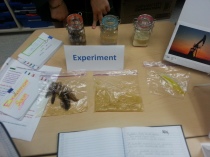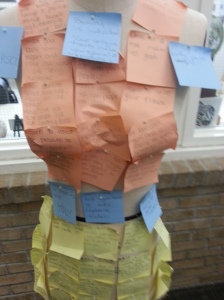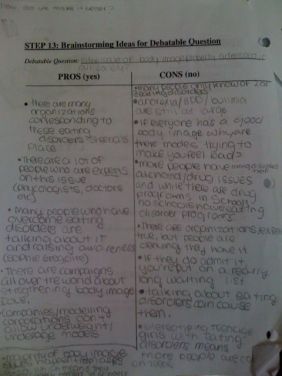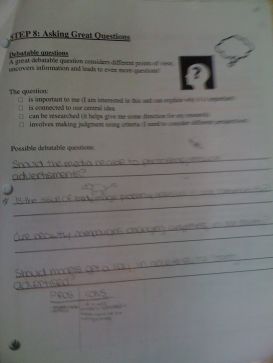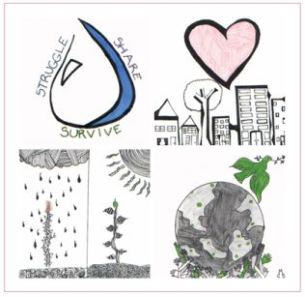
A graphic collage of student art work depicting the sharing the planet theme descriptors. This graphic was used on all posters, invites and thank you cards.
A collective exhale was joyously experienced by our students and faculty as our Grade 6s came through their big day with flying colours! The celebration began with an opening hosted by all of our Grade 6 students where they introduced the exhibition and welcomed guests (in French and English), shared a reflective voice collage where each girl shared her sentence, “Exhibition Is…”, and four students walked guests through a brief outline of the exhibition process from start to finish. Following the opening, guests were invited to view the formal presentations and exhibits. Guests were aslo invited to post their thoughts, feedback and impressions on a live blog site, called Cover it Live! It’s a great way to get feedback. Four of our Grade 5 students served as roving reporters, ipads in hand, gathering comments from guests and posting their own comments throughout the morning.
My writing can’t do justice to what the students contributed through their presentations. Here are some photos and feedback as quoted from our Cover It Live! site to paint the rest of the picture. Thanks for following along on this journey with us – it’s been so great to reflect and share with you!
“Here are some of the amazing things I learned from the exhibition on Friday from the girls in 6R5 and 6r6: 1. The population of the earth is increasing constantly — it grew by more than 2,000 people during the Population presentation alone–yikes! 2. I need to take shorter showers to preserve water and energy (I promise to work on this.) 3. The healthcare system in the UK is much better than the ones in either Canada OR the U.S. (who knew?!) 4. A bystander can be extremely helpful to someone who is bullied, so speak up and help out. 5. It’s possible to light a light bulb with a solar panel from Canadian Tire–cool! 6. Don’t underestimate the power of the media OR social media in transmitting messages about body image. 7. The Grade 6 girls at Branksome Hall are amazing. Thanks for all of these learnings, girls, and for a fantastic morning. Enjoy the last few weeks of school!” (Grace’s Mom)

“What a fascinating and powerful morning. As I listened to each of the groups I attended (Sustainability, Food, Social Media), I was so impressed with the depth of research, the professionalism of the presentation skills, and the desire by the teams to impart to their audiences a sense of the importance for changes to our outlook and habits.”(Emily’s Mom)
“This was a very well organized presentation. It was clear that everyone in grade 6 was proud of their work and participation. What a great start to future group endeavours.” (Claire’s Dad)


| “Very powerful video, social media group. They spent their time very wisely on how to show people about social media. They educated everyone so well I think many people will think twice about posting things after this presentation. They made an amazing video and really helped build people’s self esteem. Really good job you made me think so, so much about social media now.” (Callista and Sima, Grade 5 Roving Reporters) |
|
“The body image group had an amazing booth that I learnt so much just from the pictures at the booth, and I was amazing how they photoshopped Lochlan’s face. The weapons group also had a great game that we all enjoyed participating in. Now we are watching the water group presentation which has been so interesting so far. Great job girls in 6R6 and 6R5!!!” (Bessie, Grade 5 Roving Reporter) |
|
“The healthcare presentation was great! Good work girls. I liked the way you used a debate to compare the 3 different countries’ healthcare (pros and cons). The word wall was a very interesting idea – to uncover people’s real thoughts and emotions about healthcare. Good job!” (Hannah’s Mom) |

